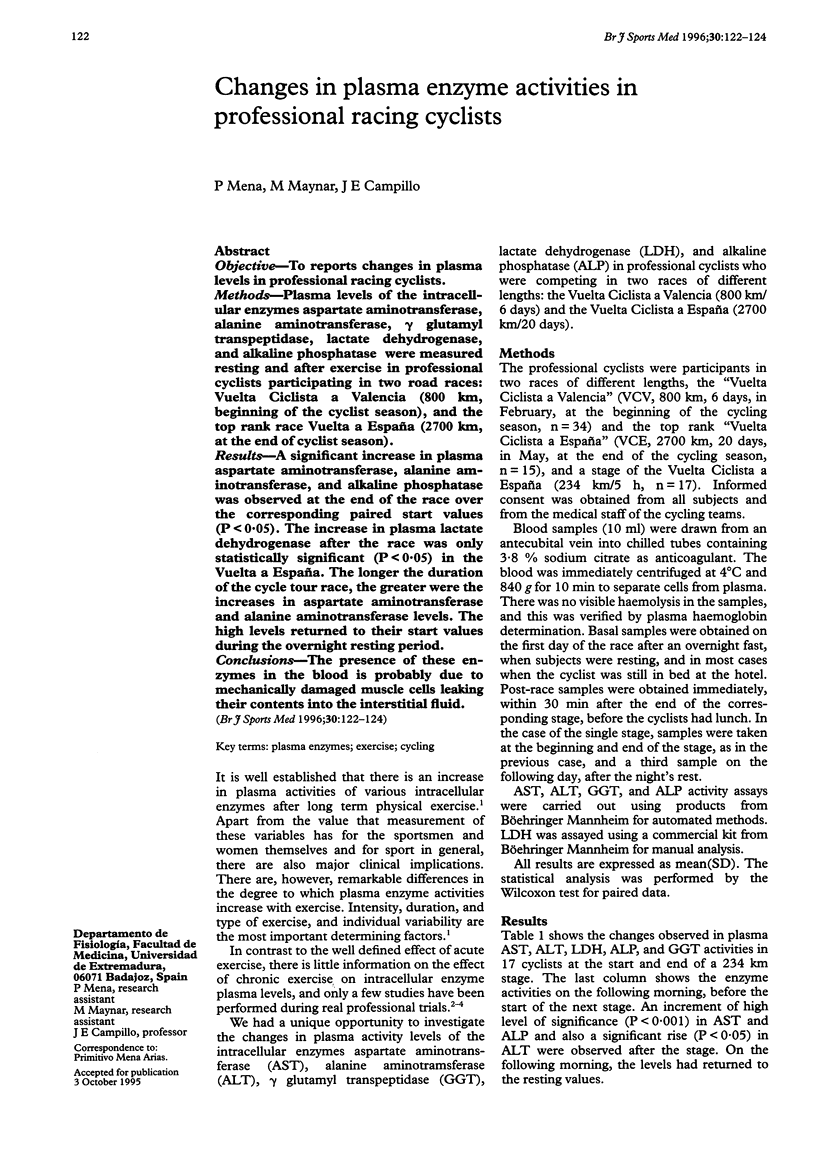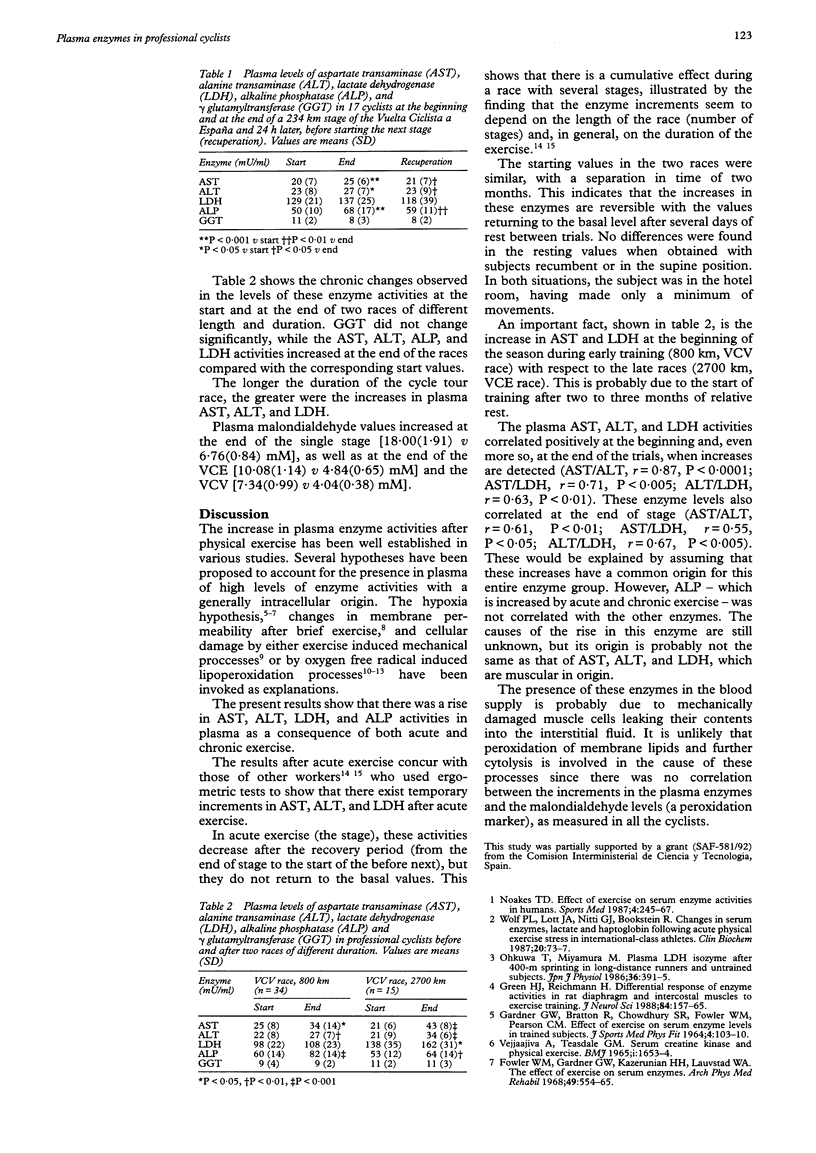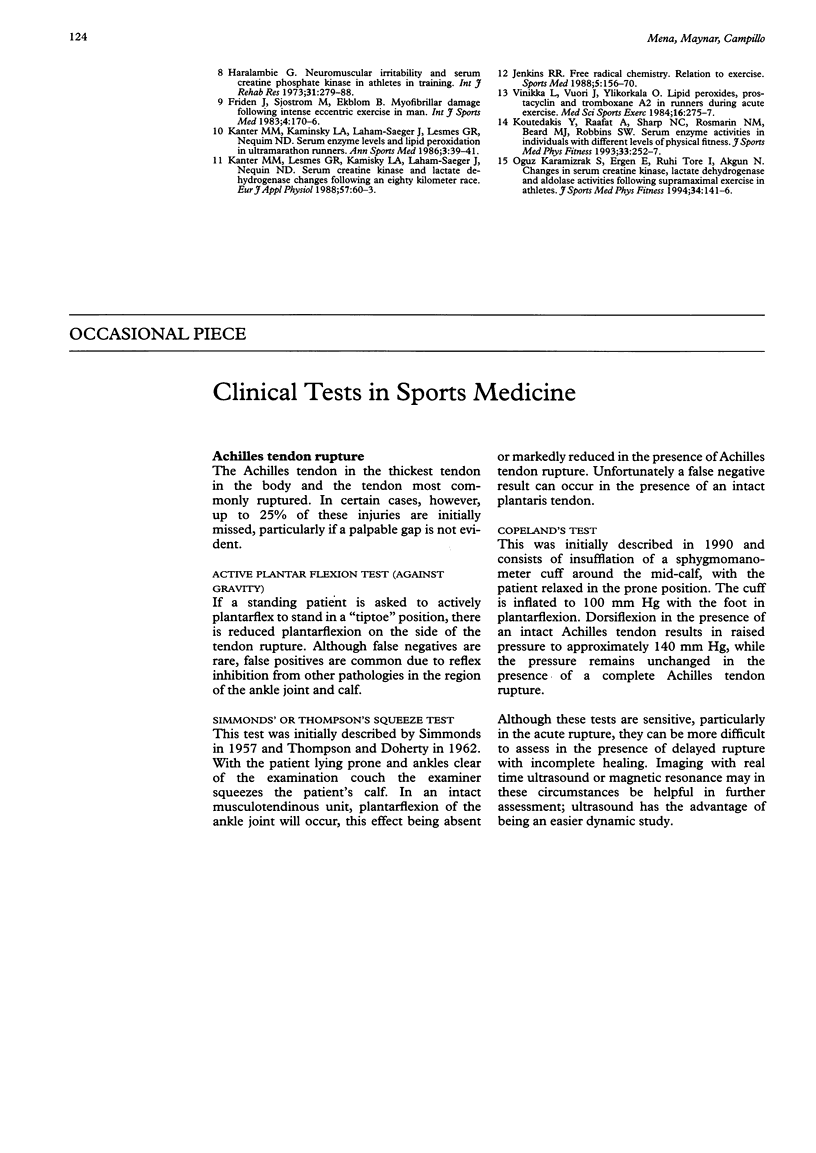Abstract
OBJECTIVE: To reports changes in plasma levels in professional racing cyclists. METHODS: Plasma levels of the intracellular enzymes aspartate aminotransferase, alanine aminotransferase, gamma glutamyl transpeptidase, lactate dehydrogenase, and alkaline phosphatase were measured resting and after exercise in professional cyclists participating in two road races: Vuelta Ciclista a Valencia (800 km, beginning of the cyclist season), and the top rank race Vuelta a España (2700 km, at the end of cyclist season). RESULTS: A significant increase in plasma aspartate aminotransferase, alanine aminotransferase, and alkaline phosphatase was observed at the end of the race over the corresponding paired start values (P < 0.05). The increase in plasma lactate dehydrogenase after the race was only statistically significant (P < 0.05) in the Vuelta a España. The longer the duration of the cycle tour race, the greater were the increases in aspartate aminotransferase and alanine aminotransferase levels. The high levels returned to their start values during the overnight resting period. CONCLUSIONS: The presence of these enzymes in the blood is probably due to mechanically damaged muscle cells leaking their contents into the interstitial fluid.
Full text
PDF


Selected References
These references are in PubMed. This may not be the complete list of references from this article.
- Fowler W. M., Jr, Gardner G. W., Kazerunian H. H., Lauvstad W. A. The effect of exercise on serum enzymes. Arch Phys Med Rehabil. 1968 Oct;49(10):554–565. [PubMed] [Google Scholar]
- Fridén J., Sjöström M., Ekblom B. Myofibrillar damage following intense eccentric exercise in man. Int J Sports Med. 1983 Aug;4(3):170–176. doi: 10.1055/s-2008-1026030. [DOI] [PubMed] [Google Scholar]
- Haralambie G. Neuromuscular irritability and serum creatine phosphate kinase in athletes in training. Int Z Angew Physiol. 1973 Jul 20;31(4):279–288. doi: 10.1007/BF00693713. [DOI] [PubMed] [Google Scholar]
- Jenkins R. R. Free radical chemistry. Relationship to exercise. Sports Med. 1988 Mar;5(3):156–170. doi: 10.2165/00007256-198805030-00003. [DOI] [PubMed] [Google Scholar]
- Karamizrak S. O., Ergen E., Töre I. R., Akgün N. Changes in serum creatine kinase, lactate dehydrogenase and aldolase activities following supramaximal exercise in athletes. J Sports Med Phys Fitness. 1994 Jun;34(2):141–146. [PubMed] [Google Scholar]
- Koutedakis Y., Raafat A., Sharp N. C., Rosmarin M. N., Beard M. J., Robbins S. W. Serum enzyme activities in individuals with different levels of physical fitness. J Sports Med Phys Fitness. 1993 Sep;33(3):252–257. [PubMed] [Google Scholar]
- Noakes T. D. Effect of exercise on serum enzyme activities in humans. Sports Med. 1987 Jul-Aug;4(4):245–267. doi: 10.2165/00007256-198704040-00003. [DOI] [PubMed] [Google Scholar]
- Ohkuwa T., Miyamura M. Plasma LDH isozyme after 400-m sprinting in long-distance runners and untrained subjects. Jpn J Physiol. 1986;36(2):391–395. doi: 10.2170/jjphysiol.36.391. [DOI] [PubMed] [Google Scholar]
- VEJJAJIVA A., TEASDALE G. M. SERUM CREATINE KINASE AND PHYSICAL EXERCISE. Br Med J. 1965 Jun 26;1(5451):1653–1654. doi: 10.1136/bmj.1.5451.1653. [DOI] [PMC free article] [PubMed] [Google Scholar]
- Viinikka L., Vuori J., Ylikorkala O. Lipid peroxides, prostacyclin, and thromboxane A2 in runners during acute exercise. Med Sci Sports Exerc. 1984 Jun;16(3):275–277. [PubMed] [Google Scholar]
- Wolf P. L., Lott J. A., Nitti G. J., Bookstein R. Changes in serum enzymes, lactate, and haptoglobin following acute physical stress in international-class athletes. Clin Biochem. 1987 Apr;20(2):73–77. doi: 10.1016/s0009-9120(87)80102-9. [DOI] [PubMed] [Google Scholar]


